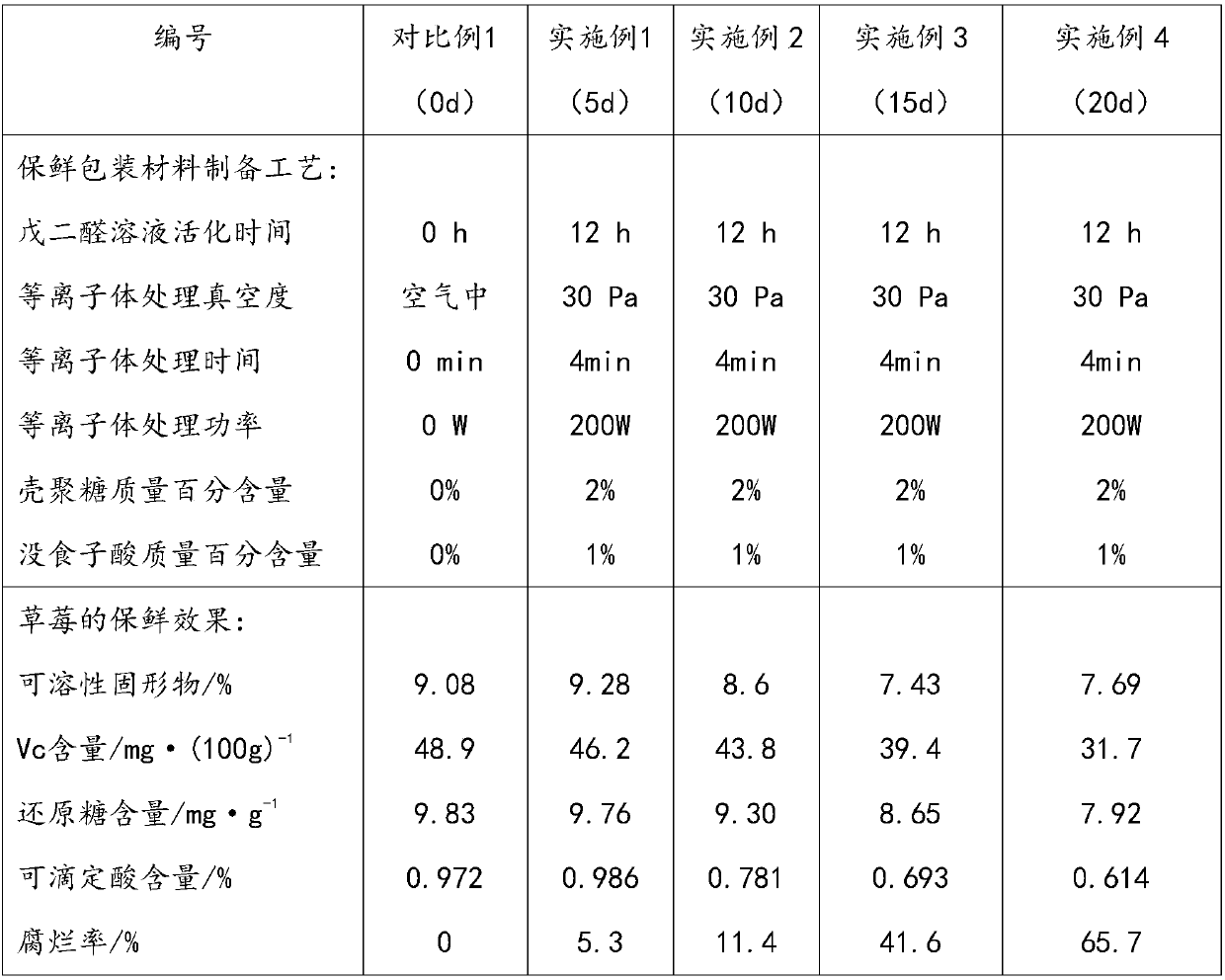Non-woven fabric based composite fresh-keeping packaging material and preparation method thereof
A composite fresh-keeping, non-woven-based technology, applied in the field of packaging materials, to reduce the weight loss rate and decay rate, inhibit the growth of bacteria, and improve the effect of freshness
- Summary
- Abstract
- Description
- Claims
- Application Information
AI Technical Summary
Problems solved by technology
Method used
Image
Examples
preparation example Construction
[0044] A method for preparing a non-woven fabric-based composite fresh-keeping packaging material, comprising the steps of:
[0045] Step 1, using normal temperature plasma to treat the non-woven fabric to promote the surface activation of the non-woven fabric: specifically, the non-woven fabric is soaked in (mass concentration) 95% ethanol, soaked at room temperature for 24-36h, and then treated with distilled water Wash repeatedly, remove the absolute ethanol in the non-woven fabric, and dry it; activate it with a glutaraldehyde solution with a mass concentration of 2.5% for 6-12h, and place it in an O with a vacuum of 30-100Pa at room temperature. 2 In the atmosphere, the plasma is treated for 4-20 minutes under the condition of a power of 50-200W. Plasma treatment of non-woven fabrics at room temperature is convenient and inexpensive, and can effectively trigger the breaking of carbon bonds on the surface of PP-based non-woven fabrics. The new green preservative compounded...
Embodiment 1
[0050] Embodiment 1 to the test of strawberry fresh-keeping performance
[0051] Strawberries were picked from the strawberry base, transported back to the laboratory immediately after picking, and forced to pre-cool for 1 hour with rapid ventilation. Strawberries with the same maturity and size, no mechanical damage, and no pests and diseases were selected as the test fruits. Cut the non-woven fabric-based fresh-keeping packaging composite material into 10cm×20cm samples to make packaging bags, put 5 strawberries in each bag, then seal the bag mouth, and put the packed strawberries into a sealed corrugated box Store at room temperature (20°C) and evaluate the preservation effect. The indicators investigated are soluble solids, Vc content, reducing sugar content, titratable acid content and decay rate. The corresponding test methods are as follows:
[0052] Determination of soluble solids: Take an appropriate amount of strawberry juice and drop it on a hand-held refractometer,...
Embodiment 2
[0065] Embodiment 2 to the test of fresh-keeping performance of green pepper
[0066] The post-harvest green peppers were quickly transported back to the laboratory, and those with pests and diseases and mechanical damage were eliminated, and those with the same appearance, intact fruit shape, full fruit, bright color, uniform color, and moderate maturity were selected for testing. Cut the non-woven fabric-based fresh-keeping packaging composite material into samples with a specification of 10cm×20cm to make packaging bags, randomly fill each portion with 3 green peppers, then seal the bag mouth, and put the packaged green peppers into a sealed corrugated box Store at room temperature (20°C) and evaluate the preservation effect. The indicators investigated are reducing sugar content, Vc content, chlorophyll, decay rate and weight loss rate. The corresponding test methods are as follows:
[0067] Determination of reducing sugar content: Determination by 3,5-dinitrosalicylic aci...
PUM
 Login to View More
Login to View More Abstract
Description
Claims
Application Information
 Login to View More
Login to View More - R&D
- Intellectual Property
- Life Sciences
- Materials
- Tech Scout
- Unparalleled Data Quality
- Higher Quality Content
- 60% Fewer Hallucinations
Browse by: Latest US Patents, China's latest patents, Technical Efficacy Thesaurus, Application Domain, Technology Topic, Popular Technical Reports.
© 2025 PatSnap. All rights reserved.Legal|Privacy policy|Modern Slavery Act Transparency Statement|Sitemap|About US| Contact US: help@patsnap.com



